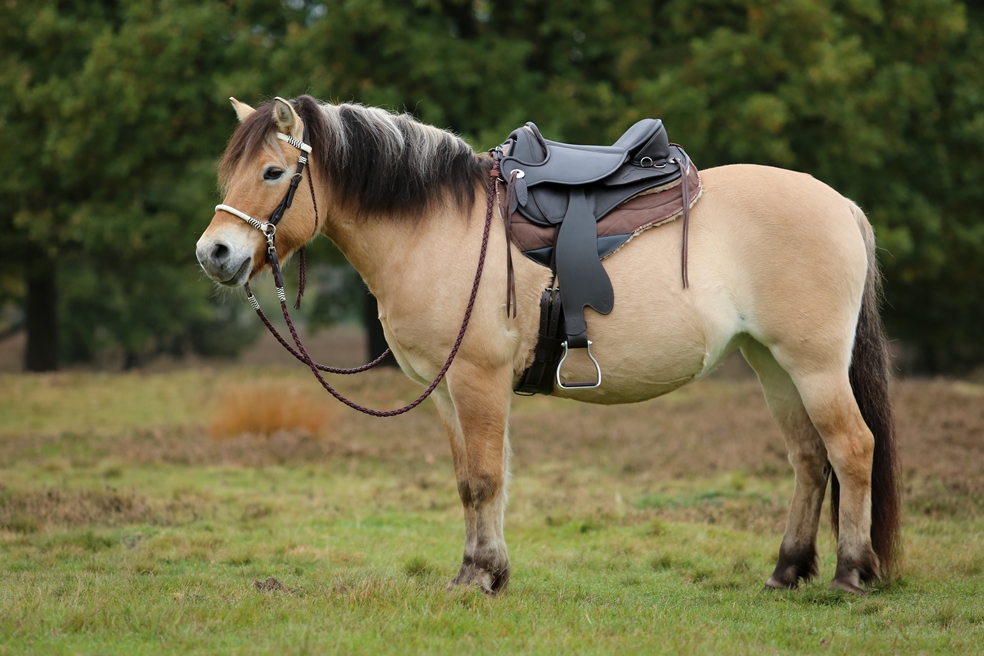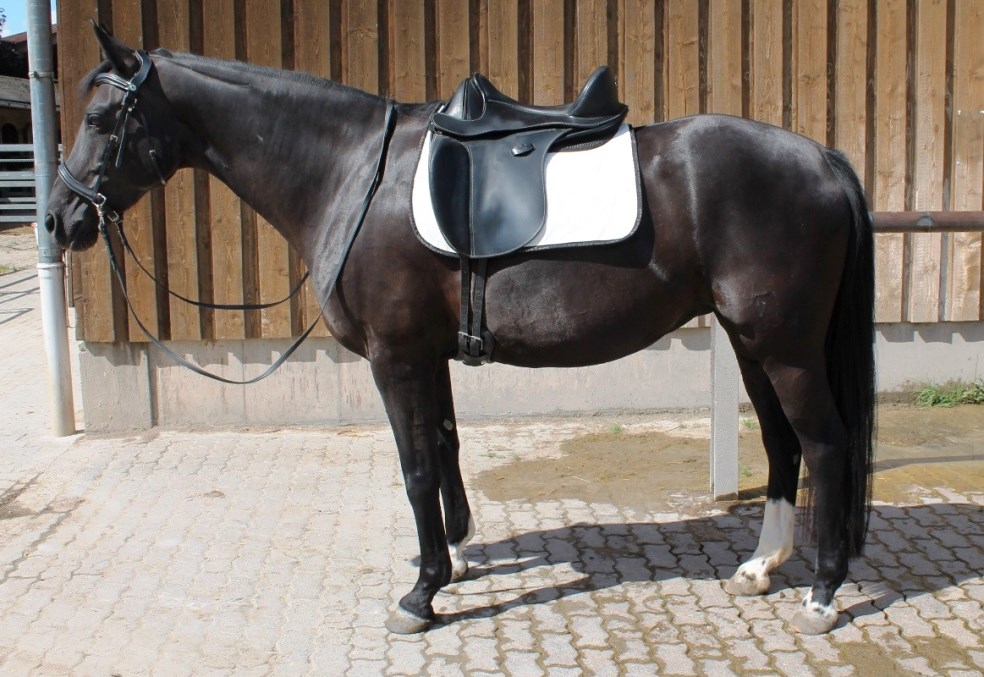Position of the saddle
The function of Barefoot saddle systems differs from that of conventional treed saddles: In order to avoid pressure on the horses back, we decided to position a seat limiter in front of and behind the rider, which functions irrespective of the rider's weight. The one disadvantage is that the saddles look bigger and covers more of the horse.
Advantage: The saddle gives the rider the same sitting position as he/she would have when riding without a saddle, namely on the part of the horse’s back which is best able to carry weight and not further to the rear. Although the Barefoot saddle also covers this area, this part of the saddle merely supports the horse and does not carry the rider’s weight. Read more about "the horseback and saddle" in our free knowledge brochure.

The horse spine can carry weight best between the withers and the 15th thoracic vertebrae
The rider sits in the Barefoot between two moulded parts (fork and pommel); whereas the rear is quite flexible, the front gives only slightly, as it is intended to keep the withers free and give the saddle its shape. This front part (the exchangeable pommel) moves freely on the horse’s shoulder without inhibiting the shoulder’s freedom of movement. This is why the Barefoot saddle can be placed directly on the shoulder. Anatomically, saddling over the shoulder is only possible on horses with short, flat withers, which is often the case with many compact leisure horses.
 Here you can see the correct position of the Atlanta saddle on a horse where the withers are short and flat
Here you can see the correct position of the Atlanta saddle on a horse where the withers are short and flat
A horse with prominent withers reaching far into the saddle position - which is generally the case with thoroughbreds and warm-blooded horses - cannot be saddled directly on the shoulder for anatomical reasons. In this case the optimal saddle position is behind the shoulder, as you will be familiar with from conventional treed saddles.
 Here you can see the correct position of the Wellington saddle on a horse with long withers
Here you can see the correct position of the Wellington saddle on a horse with long withers
